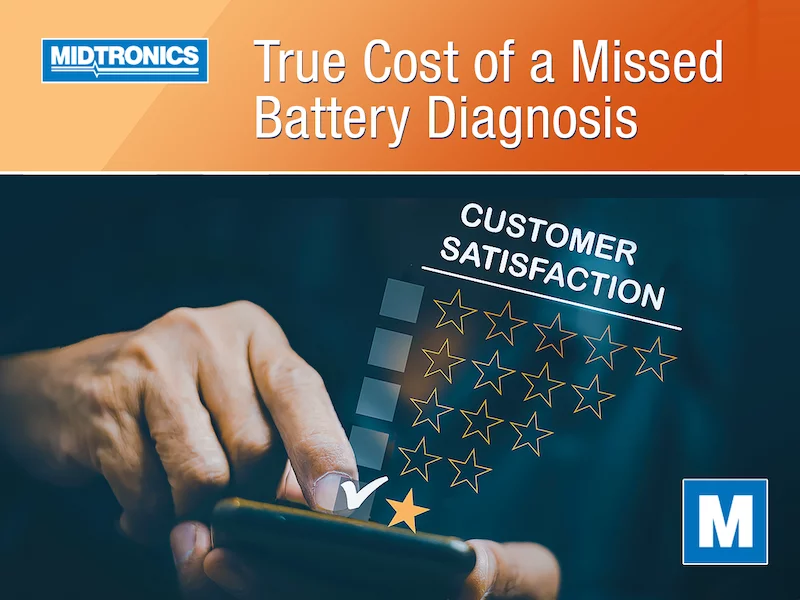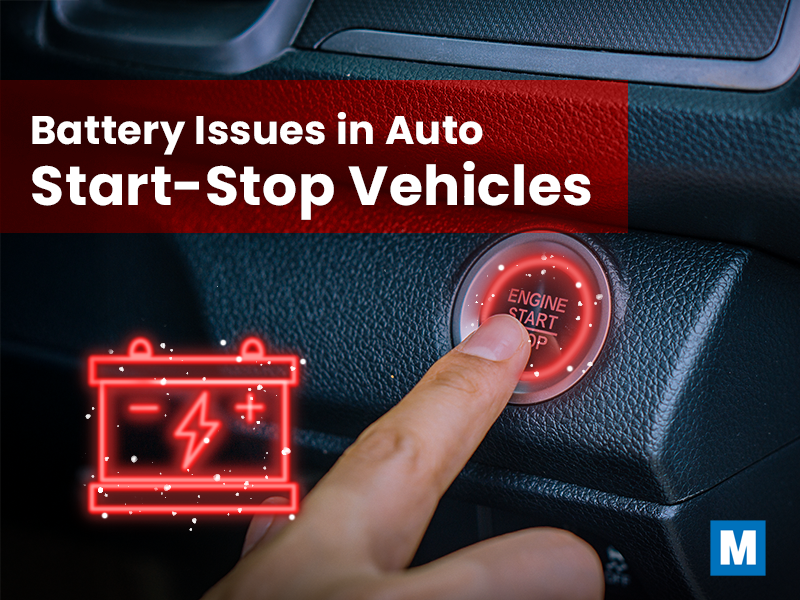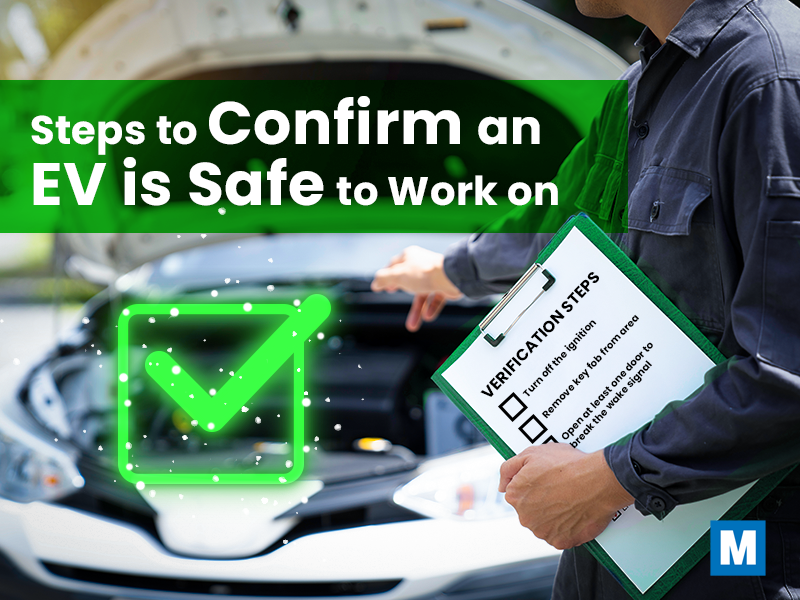Almost without exception, vehicles on the road today have a 12-volt electrical system that utilizes a battery. Even for commercial vehicles with a 24-volt system and EVs with much larger battery packs, a separate battery is used for body systems like lighting, HVAC, and other comforts. When any of these vehicles enter a garage for servicing – be it a dealership, a mom-and-pop garage on the corner, or a big box store’s service department – will that battery get tested to verify it’s in good shape?
The data shows that, unfortunately, fewer many service visits don’t include a preventative battery test – that is, a test to determine the battery’s health absent a customer complaint. In some cases, fewer than 10% of batteries are tested without it being directly related to the customer’s concern.
But why is that important? It’s because approximately one in five cars on the road today are driving around with a bad battery.
Service departments all seem to be extremely busy and profitable, and there’s no question many are doing what they can in the face of challenges like a technician labor shortage. But there’s a significant cost associated with missing bad batteries on vehicles that pass through the capable hands of a technician in a service shop.
Missed Battery Sales and Labor
Of course, the most obvious cost of missing out on diagnosing a bad battery with preventative testing is the sale of the battery itself and the correlating labor to install it. Between manufacturer incentives to sell batteries and the actual profit made from each one, a single missed sale can cost a dealership and other professional shops between $30 and $60 each.
The labor to install the battery is also missed when it doesn’t get diagnosed. With an average install labor price of around $35, of which $20 is an estimated gross profit, that means a simple battery replacement costs the shop between $50 and $80 per missed bad battery in gross profit.
The missed opportunity adds up quickly. Think of the amount of cars that come through your garage. Are you replacing 1 in 5 batteries?
Related Repairs and Services Missed
When a preventative test identifies a bad battery and the customer is notified, a common response is, “Oh, I had no idea. Come to think of it, could that be why…” followed by symptoms like “my headlights keep flickering, my car stalls occasionally”, and so on. The door swings wide open to dig into other areas of service or repair that are undoubtedly more profitable.
NADA guidelines are that no more than 10 to 15% of work orders should have just one line – for example, an oil and filter change only. If the rate of one-liners is higher, that’s usually a red flag that someone isn’t doing their due diligence to identify issues while the car is already in the shop. The best way to avoid one-line ROs is to do more than the customer is expecting, and find areas of concern in a preventative manner. That’s what a battery test achieves, building sales indirectly by identifying bad batteries.
The Comeback Costs
One Canadian service chain uses the motto, “If your car won’t start and go, we will pay your tow.” And whether shops phrase it like that or not, often there are expenses related to customer issues that happen shortly after they’ve been in for service.
Any service advisor or service manager will acknowledge that there are tow trucks called and paid for by the dealership because of issues a technician should’ve detected when the car was in a few days, a couple of weeks, or even a month earlier. And the tow truck expense isn’t all – there’s usually a steep discount or a split cost of the repair between the shop and the customer to try to make things right. What could’ve been a battery sale that earned the shop $50 in gross profit now cost $50 for a tow plus likely turned the service invoice into an expense.
A ‘comeback’ is one of the worst situations for a shop because it erodes customer trust, reduces profit, and often has costs that come directly from the bottom line.
The Cost of Lost Customer Loyalty
No customer costs less to attract than the one you already have. Customer retention is huge for service shops since new customers are often visiting for the first time for loss leader services like oil changes, wiper blades, or brake pad replacements. It takes time to build their trust to a point where they invest their money into higher-value services and repairs.
When even one loyal customer is upset and decides to take their business elsewhere for something as seemingly insignificant as a missed battery test, it’s a hit to the shop.
Damaged Reputation for Referrals
In an age where businesses manipulate Google reviews, people are having difficulty finding service shops they can trust. After a good experience, nothing has the same power as personal referrals for a dealership or shop, whether that’s for a new car, a brake job, or a battery.
But the opposite is also true too. A negative experience immediately wipes away the potential for referral business, and in fact, it goes well beyond. Nine to one, customers talk more to their friends and family about negative experiences than positive ones. So, missing a bad battery on a service visit that ends poorly could mean as many as nine other people hear about the bad experience.
Test Every Battery, Every Time
While it might seem at face value like a minor issue, missing out on diagnosing a bad battery with a preventative test can hurt your business. The solution is incredibly simple, fast, and carries very little cost to implement – and the equipment is probably already in your shop.
Ensure every vehicle that passes through your shop receives a battery test on every visit.




